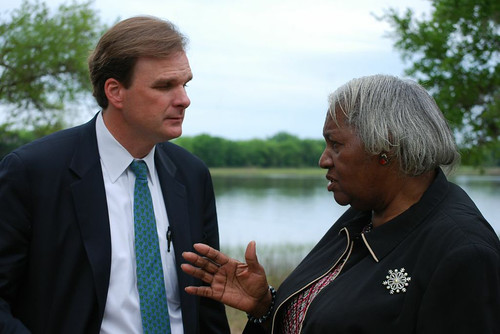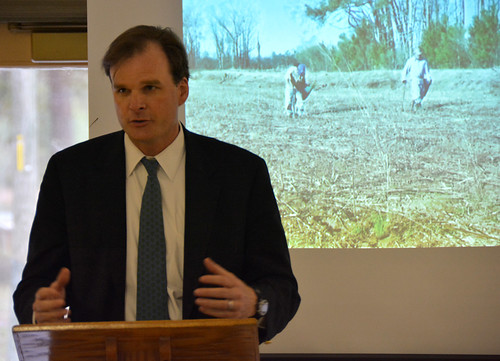
The longleaf pine ecosystem is one of the most diverse in the world. It provides habitat to nearly 900 plant species and 29 federally-listed threatened or endangered species. It’s prized for its valuable timber and its strength against disease, pests and damaging storms.
But longleaf pine forests are now rare since their original range of 90 million acres has waned to just a few million. USDA and other partners are working to change this.
USDA Under Secretary for Natural Resources and Environment Robert Bonnie recently traveled to South Carolina to meet with USDA employees and conservation partners. Bonnie toured private and public lands where the USDA’s Natural Resources Conservation Service and the U.S. Forest Service have recently protected and restored thousands of acres of longleaf forests.
At Nemours Wildlife Foundation in Yemassee, S.C., Bonnie learned about successful private land conservation efforts on 785 acres of longleaf pine using a conservation program with NRCS. NRCS offers technical and financial assistance for owners and managers of private lands to improve their longleaf forests, such as helping plant new trees, manage through prescribed burning and remove invasive plants.
The foundation’s forest provides prime habitat for the federally endangered red-cockaded woodpecker. This is the only type of woodpecker in the country that builds its nest cavity in living, old-growth pine trees.
Bonnie also visited the state to celebrate the recent acquisition of more than 2,200 acres of Fairlawn Plantation, located in the heart of the Francis Marion National Forest.
The Francis Marion, managed by the Forest Service, supports one of the South’s largest remaining longleaf ecosystems, along with more than 30 other ecosystems and 1,600 different plant species. The forest provides homes to two species of concern, the spotted turtle and flatwoods salamander, and boasts one of the largest populations of the red-cockaded woodpecker with 400 breeding groups.
The purchase of Fairlawn, funded by Boeing, will enable restoration of the land for up to five years, which will then be transferred to the Francis Marion for long-term ownership and management.
“We applaud this historic partnership, which will complement the public lands of the Francis Marion, benefit the ecosystem and help preserve this national treasure for generations to come,” Bonnie said. “Conserving America’s forests and wetlands is a team effort. Public-private partnerships like this one are critical to developing solutions to our country’s most challenging conservation issues.”

